
|
Lorna Mills and Sally McKay
Digital Media Tree this blog's archive OVVLvverk Lorna Mills: Artworks / Persona Volare / contact Sally McKay: GIFS / cv and contact |
View current page
...more recent posts
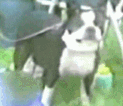
(found)
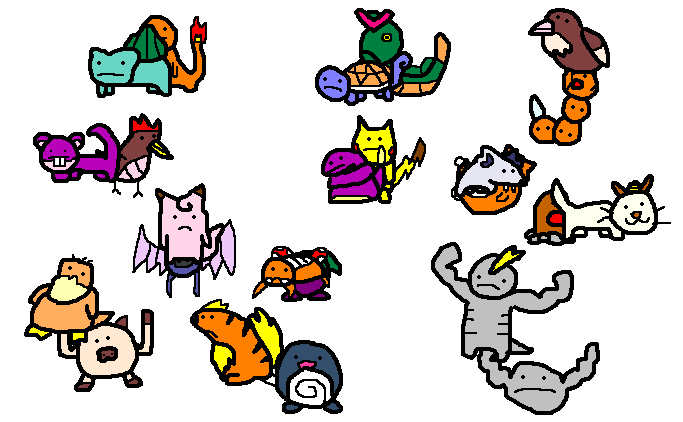
(found)
In Geert Lovink's new book (mentioned in yesterday's post) there is an interesting almost-manifesto about network aesthetics that he wrote with Anna Munster for Fibreculture in 2005. Reminding me of Tom Moody's complaints about what he calls, "XYZ art," Munster and Lovink take on the proliferation of network mapping projects and call for more nuanced expressions of network culture that aren't reduced to pictures of nodes and lines. Some bits:
The very notion of a network is in conflict with the desire to gain an overview.
Mapping information – the aesthetics of contemporary visualisation – provides a sense of relief that the twisted and unstructured info-bits that roam around in our cognitive unconscious are finally laid-out to rest. A beast is tamed.
We should forget about exposing the links that are already there, and, with our capacity to engage a networked logic, forge links to what is in the network but not yet of the network. By this we mean to invoke a project more akin to social aesthetics or aesthesia in which we engage in and with the collective experiences of being embroiled in networks and being actively part of their making. This we can contrast with the abstracted activity of simply mapping quantities of data – such as social network maps – a form of production already captured by the codes and conventions of connectivity.
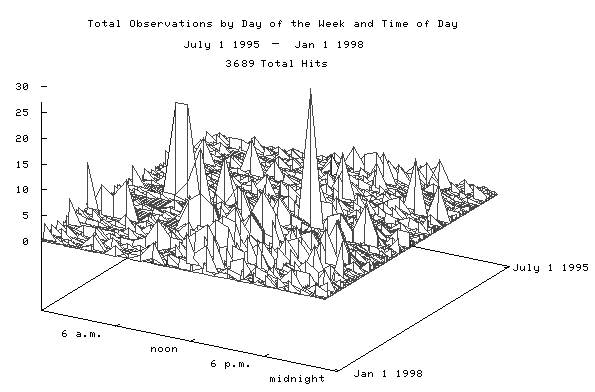
This image above (1998) is the "final map showing 2.5 years of accumulated statistics" from John F. Simon, Jr.'s finished net.art project Alter Stats. Below is a recent image (2007) by Chris Harrison, "a Ph.D. student in the Human-Computer Interaction Institute at Carnegie Mellon University."
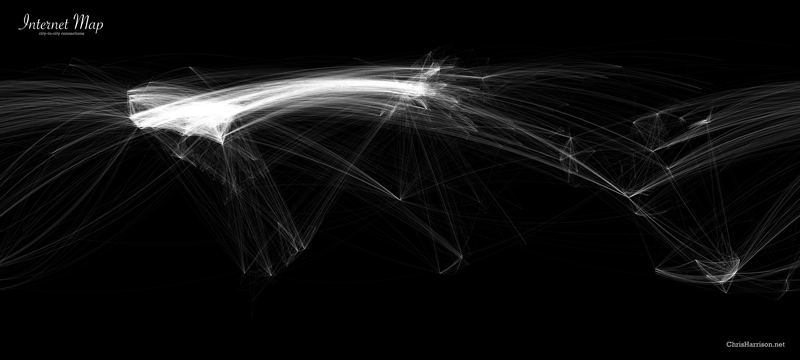
In the early days of net art, technical expertise was political in the hands of artists who used their skills to claim the technology and make it transparent, thereby resisting corporate attempts to perpetuate the seamless illusions of television online. But as the internet morphed from a medium to a ubiquitous environment, the urgency with which net artists revealed technology shifted from an activist practice to an ideological, formalist aesthetic.
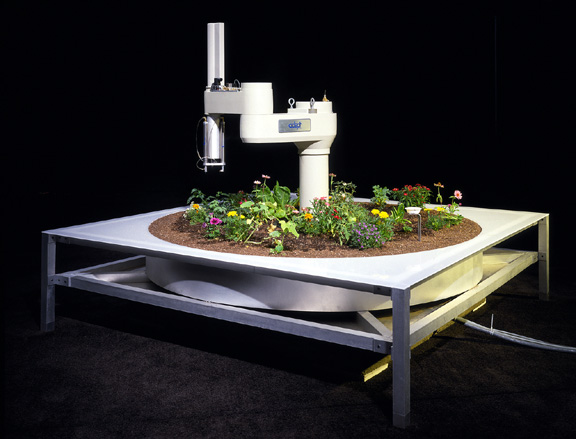
There's lots of grey area, like Ken Goldberg's famous Telegarden (1995-2004), above. In this work, internet users tend a garden from remote locations by interacting with a website that sends commands to a robot in the gallery that waters the plants. This work differs from a network map in that it does not literally represent nodes and lines of connection. But its literal manifestation of a network is vulnerable to Lovink and Munster’s critique that “the increasingly abstract topological visualization of networks removes us from an analysis of the ways in which networks engage and are engaged by current political, economic, and social relations.” In 1995, the garden itself was staged as if it were a meaningful object, cared for collaboratively by a network of internet users. But in the present day context, the fragile little circle of plants functions as an instrument for the system, revealing nothing more than its own site as node in the network. When the self-reflexivity of the gallery artworld melds with the self-reflexivity of network mapping, we end up with a techno-art snake eating its own tail.
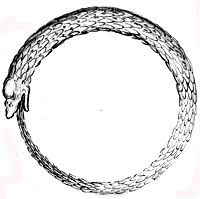
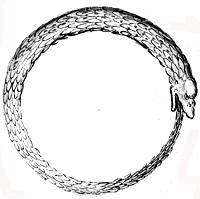
I have been reading parts of Geert Lovink's book Zero Comments: Blogging and Critical Internet Culture. Lovink has been around the new media scene for a long time, since before the internet got ubiquitous. He says some pretty harsh/funny things about new media as a discipline in his chapter "The Cool Obscure." Here's a few zingers:
Digital aesthetics have developed a hyper-modern, formalist approach, and seem to lack the critical rigour of standard contemporary art pieces. (p.56)Lovink is worried about the viability and sustainability of new media art as a discipline. A lot of his criticism resonates with me, although of course I can think of lots of examples of awesome artworks that contradict his general thesis. He makes the disclaimer, however, that he is not addressing specific works, but rather new media institutions and general trends. Here's a bit that cracks me up:
Links to contemporary social movements are weak, and the awareness of basic postcolonial issues is often absent. This is not the case if we look at individual works, but certainly if we look at the way festivals and conferences are programmed. (p.58)
Putting content online is a last resort, but funnily enough it is not very popular among new media artists. The Internet is looked down upon by some as a primitive device, left to an in-crowd of Internet artists and discourse leaders who prefer to perform formalistic experiments, combined with a subversive political action every now and then...(p.58)
There is a widely spread belief that tech-based artworks have the potential to be genius. Supposedly there are not yet traces or fingerprints of society on recently developed technologies and the artist therefore has the full range of all possible forms of expression in front of him or her. [...] According to this "myth of the blank page," new media artists are not limited by existing cultural connotations because there are no media-specific references yet. It is the heroic task of the new media artist to define those cultural codes. (pp.50-1)
Why did new media art miss out during the exuberant dotcom days and why do geeks and IT millionaires prefer buying cars and other middle class baubles of consumption, and turn their backs on their own art form? (p.40)Um...cause for young guys who suddenly come into wads of cash, art is almost never the first thing on their mind? For artists who are used to juggling day jobs and multiple types of gigs to pay the rent, the idea that new media would provide some kind of ongoing access to big money might seem a little silly. But that only goes to prove Lovink's overall point:
Electronic art, an earlier synonym for new media art, is in crisis. So is virtual art and net.art. These carefully gated communities have proven incapable of communicating their urgency and beauty to their ever-rising (potential) audience. (p.41)Lovink positions himself as a kind of whistleblower, and suggests:
...we urgently need to analyze the ideology of the excessive 1990s and its associated political consciousness of techno-libertarianism. If we do not disassociate new media quickly from that decade, and if we continue with the same rhetoric, the isolation of the new media sector will eventually result in its demise. Let's transform the new media buzz into something more interesting altogether before others do it for us. The will to subordinate to science is nothing more than a helpless adolescent gesture of powerlessness and victimhood. (p.68)ouch!
Sunday Devotionals - Shirley Bassey
I Who Have Nothing
Goldfinger
Something
Spinning Wheel

(found)